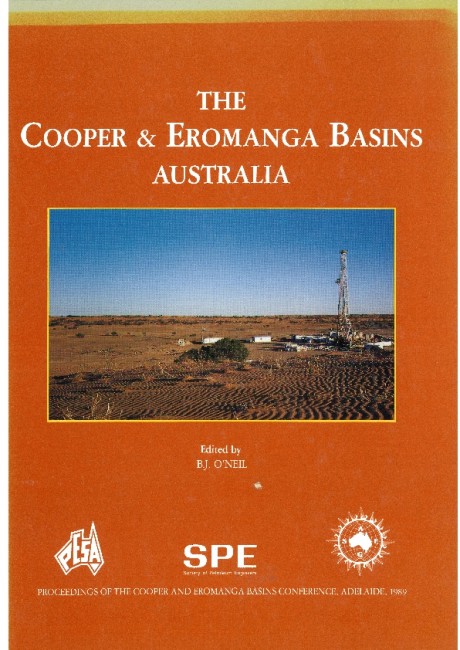Publication Name: The Cooper & Eromanga Basins Australia
Authors: I.M. Longley
Date Published: June 1989
Number of Pages: 34
Reference Type: Book Section
Abstract:
In the Talundilly area of the Eromanga Basin there is a circular area 95 km across with disturbed seismiccharacter. This disturbance is most readily recognized by the absence of the strong 'C' horizon (top Cadna-owie
Formation) seismic reflector. The model presented here attributes the seismic disruption to local faulting, erosion and deposition which occurred in response to a meteorite impact. A similar probably synchronous impact feature can be recognised in the Tookoonooka area, 300 km to the south-west.
As inferred from well and seismic data the meteorites impacted during the Barremian whilst the upper (preWyandra Sandstone) Cadna-owie Formation was being deposited. The impacts produced large sombrero!shaped cratets consisting of a raised circular rim and a depressed crater area surrounding a central uplifted peak. The subsequent modification of the astroblemes can be divided into two sequential phases. The earlier largely subaerial phase, immediately following impact, was a period during which the elevated rim areas were incised by channels, the crater was partially filled by sediment and the crater edge was affected by faulting in response to slope instability.
The later phase of modification followed a period of rapid basinwide subsidence which resulted in marine transgression and deposition of the Wallumbilla Formation shales. These marine shales passively infilled the residual topography, thus preserving the morphology of the areas of channel incision, but were affected by continued faulting in the crater area. This faulting was probably in response to gravitational collapse or isostatic rebound of the immediate area following meteorite impact. Cessation of significant local faulting and the subsequent deposition of a typical Eromanga Basin sequence occurred within the Aptian. This event is marked by a locally prominent seismic horizon (the intra-Wallumbilla seismic horizon) and probably represents the achievement of local isostatic equilibrium.
The model suggests three stratigraphic, fault or combination fault/stratigraphic plays. These plays predate significant generation of hydrocarbons and are optimally located to receive migrating hydrocarbons from more
basinal areas. All three plays are believed to be presently untested.


